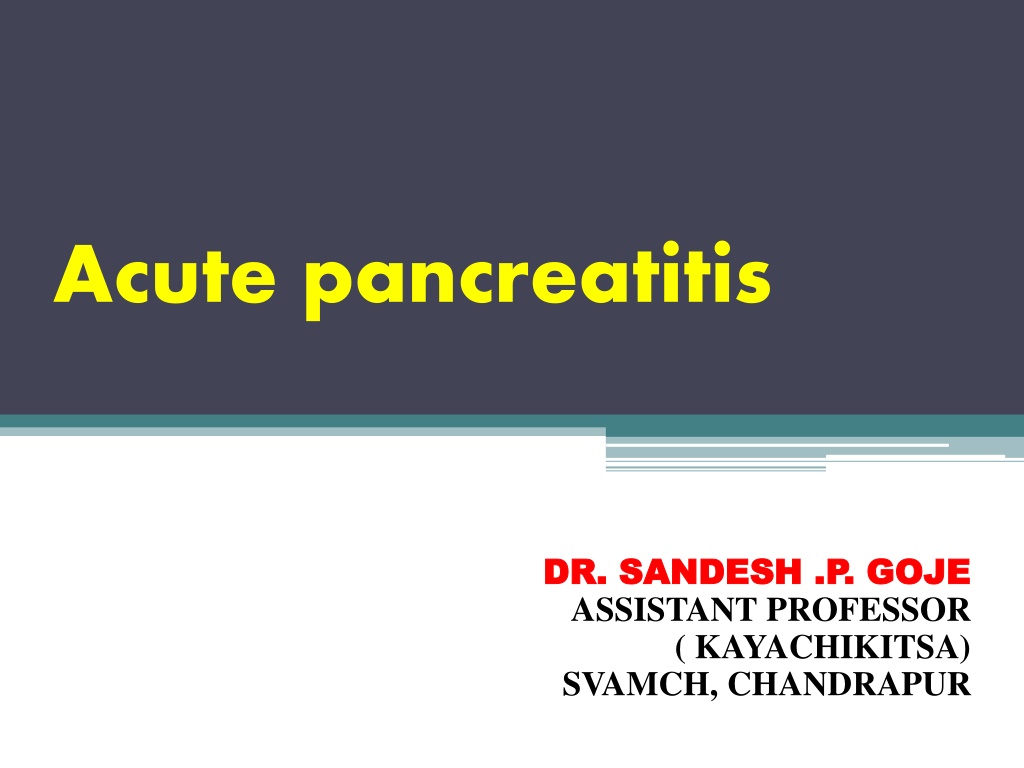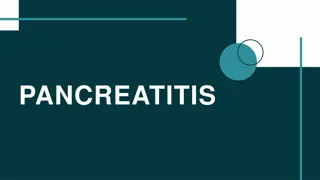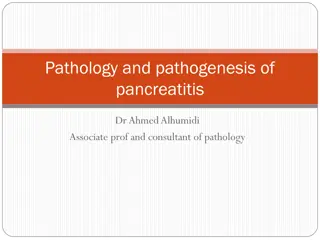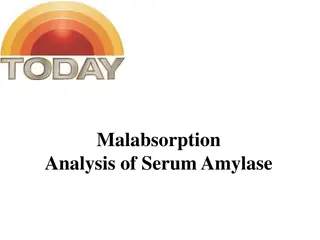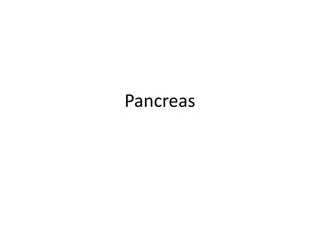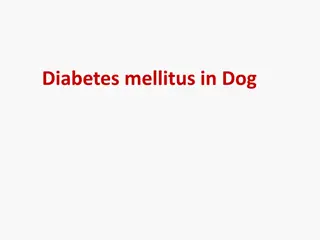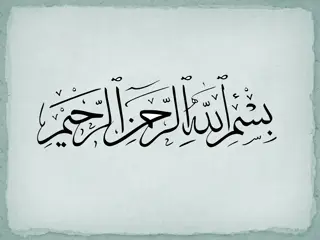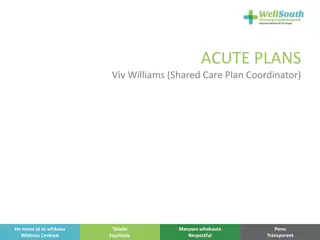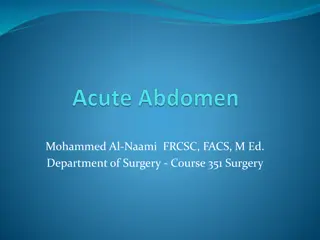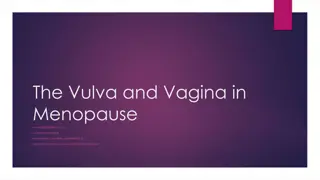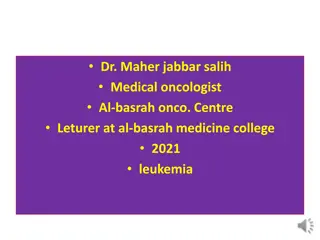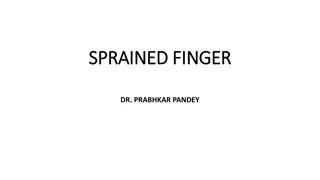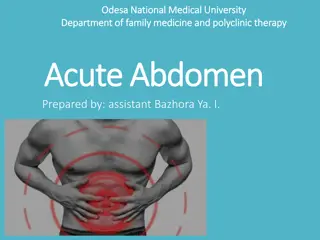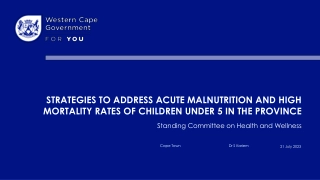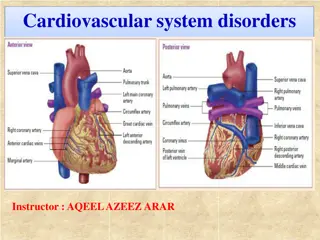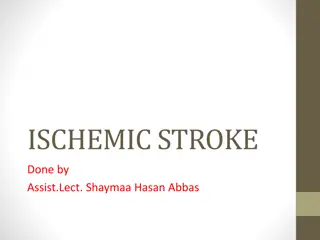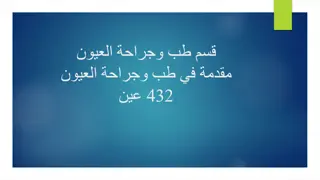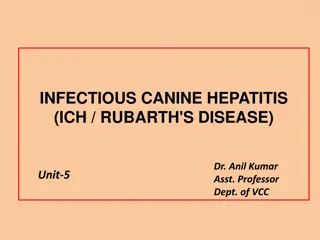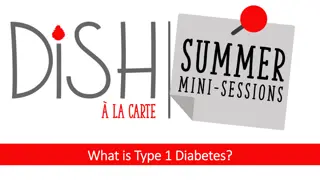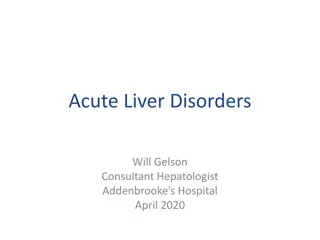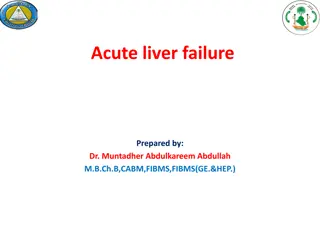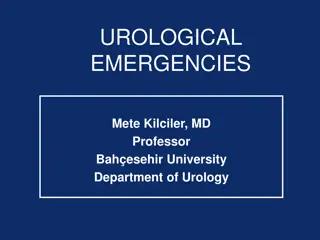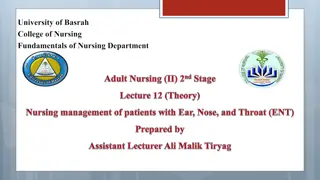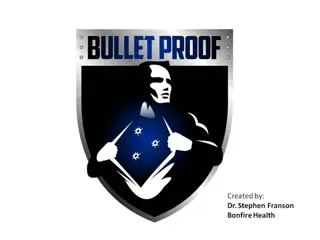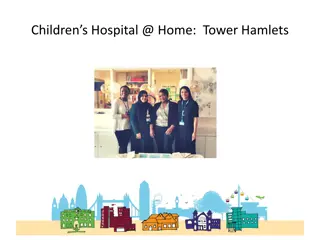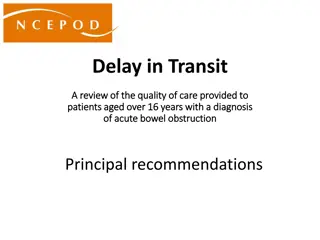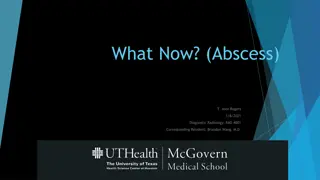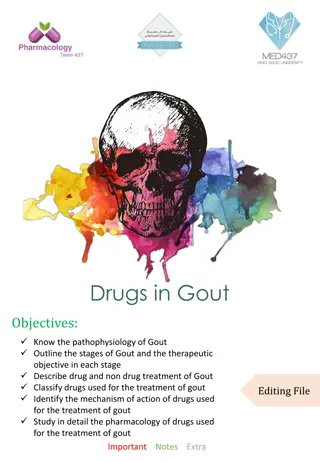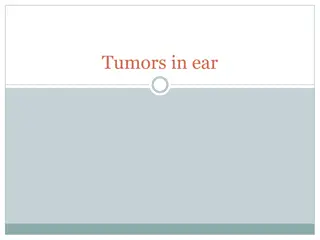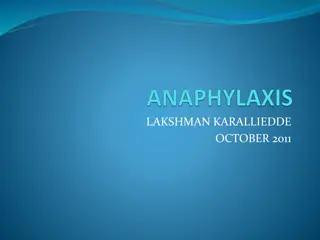Understanding Acute Pancreatitis: Causes, Symptoms, and Treatment
Acute pancreatitis is a sudden inflammation of the pancreas, often caused by factors like gallstones or heavy alcohol use. This medical emergency presents with severe epigastric pain, nausea, and vomiting. Learn about its causes, pathogenesis, types, and clinical features to better understand this condition and its management.
Download Presentation

Please find below an Image/Link to download the presentation.
The content on the website is provided AS IS for your information and personal use only. It may not be sold, licensed, or shared on other websites without obtaining consent from the author. Download presentation by click this link. If you encounter any issues during the download, it is possible that the publisher has removed the file from their server.
E N D
Presentation Transcript
Acute pancreatitis Acute pancreatitis DR. SANDESH .P. GOJE DR. SANDESH .P. GOJE ASSISTANT PROFESSOR ( KAYACHIKITSA) SVAMCH, CHANDRAPUR
Introduction and definition Acute pancreatitis is a sudden inflammation of the pancreas caused due to a gallstone, heavy alcohol use, systemic disease, trauma. and in minors, of mumps which gives rise to severe epigastria pain, nausea and vomiting. Acute pancreatitis may be a single event it may be recurrent or it may progress to chronic pancreatitis. Being a medical emergency, it in acute and mild cases are usually successfully treated with conservative measures in ICU to monitor and manage complications of the disease.
Causes Biliary calculus Alcohol Post operative (abdominal, non abdominal) Trauma to abdomen Metabolic conditions Drugs (Sulphonamides, thiazides, Oestrogens, Azathioprine, corticosteroids) OP Poisoning Hereditary causes Infections (Virus, bacterial, roundworm, mycoplasma) Post mumps Post ERCP, MRCP Carcinoma of the head of pancreas Radiations By Radioisotopes. Autoimmune pancreatitis(SLE, Thrombotic thrombocytopenic purpura, polyateritis nodosa)
Pathogenesis There is abnormal activation of digestive enzymes within the pancreas called zymogenes mostly trypsinogen. Trypsinogen is converted to its active form in duodenum, assists the digestion of proteins. During an episode of acute pancreatitis, trypsinogen comes into contact with lysosomal enzymes specifically cathepsin, which activate trypsinogen to trypsin which leads to further activation of other molecules of trypsinogen and results inflammation, oedema, vascular injury, and even cellular death and necrosis. The initial injury there is an extensive inflammatory response due to pancreatic cells synthesizing and secreting inflammatory mediators: primarily TNF-alpha and IL-1. The inflammatory response leads to the secondary manifestations of pancreatitis: Results :-hypovolemia from capillary permeability, acute respiratory distress syndrome, disseminated intravascular coagulations DIC, renal failure, cardiovascular failure, and gastrointestinal haemorrhage.
Types of pancreatitis 1. Acute pancreatitis 2. Chronic pancreatitis 3. Tropical pancreatitis
Clinical features of acute pancreatitis Severe epigastria pain mild to severe. Dull boring steady pain, sudden and acute onset. Pain radiates from abdomen to back. Partial relief if pts. sits up and leans forwards. Intensity of pain lasts for more than one day Nausea, vomiting, loss of appetite Fever with chills. Severe toxicity and septic condition. Hemodynamic instability. Tachycardia, respiratory distress, peritonitis, hiccup. Hypotension, hypoglycemia, shock.
Signs:- Fever Tachycardia Tachypnoea (sec. to inflammation of lungs and pleural effusion) Hypotension (due to plasma leakage into peritoneal cavity, kinine-induced vasodilatation and proteolytic, lipolytic enzmes released in circulation) Jaundice Abd. Tenderness, guarding, distension. In lungs- cyanosis, basal crepitation, pl. effusion. Cullen s sign positive (bluish discoloration around the umbilicus ) Turner s sign positive (bluish or green discoloration in the flanks) Haematemesis or malena.
Signs continue.. Grunwald Sign (presence of bruise, ecchymosis around the umbilical region due to local toxic lesion of the vessels.) Korte sign (severe pains or resistance at umbilical region where head of pancreas is located) Kamenchik sign (pain with pressure under xiphoid process)
Chronic pancreatitis Chronic information of pancreas presenting as recurrent pain, endocrine deficiency (diabetes mellitus), exocrine deficiency (malabsorption) or a combination of two or all three features.
Chronic pancreatitis Causes Cholelithiasis Chronic alcoholism Autoimmune causes Sjogren s syndrome Cystic fibrosis Idiopathic
Clinical features of Chronic pancreatitis Epigastria pain continuous are intermittent type. Radiating from front to back side. Pain aggravates ever while consuming alcohol or irritant food. Vitamin deficiency, weight loss Diarrhoea, steatorrhoea, malabsorption. Diabetes mellitus.
Tropical pancreatitis Not related to alcohol intake Juvenile form of chronic pancreatitis Exclusively seen in tropical countries Asia, Northern Africa etc. In India @ Kerala and Tamilnadu
Tropical pancreatitis Causes Infection (viral, bacterial, tubercular, coxsachie) Stress Malnutrition Idiopathic
Clinical features of Tropical pancreatitis Generally males affected. Recurrent abd. Pain @ epigastria area radiating towards back. Pain aggravated by heavy irritant meals. Malabsorbtion. Abd. Distention Enlarged parotid glands. Diabetes mellitus. Ketosis rarely.
Investigations:- CBC (leucocytosis) LFT, KFT, ESR, RBS, urine routine mic. Serum amylase (elevated) Serum lipase (elevated)+++ Trypsin selective test. Sr. Calcium.(decreases) Lipid profile Blood gases (PaO2, PaCO2, pH, HCO3 ,O2CT) Plain x-ray abd. CXR-PA view USG Abd., CT Abd., MRI Abd. ERCP(Endoscopic retrograde cholangiopancreatography) MRCP(Magnetic resonance cholangiopancreatography)
Differential diagnosis Intestinal perforation. Bowel ischemia. Acute myocardial infraction. Amoebic liver abscess. Acute appendicitis Pneumonia Acute cholecystitis Acute or chronic Renal colic Oophritis, salphingitis, endometritis Torsion of ovaries.
Complications:- ARDS Multiple organ failure, Pleural effusion. Hypovolaemic shock. Cardio vascular failure. DIC, anemia, jaundice, Arthalgia. G I Haemorrhage,Renal Failure. Hypocalcaemia, Hyperglycemia, Hypertriglyceridemia Thrombosis of Splenic vein Obstruction of portal veins Pancreatic Ascites, pancreatic abscess, necrosis Pancreatic pseudo cyst, Pancreatic cancer. etc.
Treatment Pts. Should be Admitted in ICU. Watch for TPR-BP, SPO2, RBS. O2 Inhalation SOS. NBM Starts IV fluids Insert Ryle's tube with continuous nasogastric aspiration Connect monitor (NIBP) Watch for abd. Girth, urine output, Blood gases. Send Blood sample for Investigation. Assess Foley s catheterization for UOP.
Treatment cont. A. - - B. - - - - - - C. Broad spectrum Antibiotics:- - Ing. Meropenen 1 gm IV TDS OR - Ing. Imipenem 1 gm IV TDS OR - Ing. Pipracilline tazobactum 4.5 gm IV TDS OR - Ing. Ceftriaxone HCL 1-2 gm IV TDS D. ERCP or MRCP may perform within 24 to 72 hours E. Surgical intervention:- (if pancreatic necrosis, complications ) - Pancreatectomy , Pancreato-jejunostomy, necrosectomy. Fluid replacement therapy:- NS, RL, DNS, Isolyte -M 20ml/kg per hour for 1 hour followed by 3 ml/kg per hour Pain control:- (Opoids\NSAIDS) ing. Pethidin 100 mg IM tds. Ing. Morphine Ing. fentanyl Ing. Hyoscine butylbromide 20mg SOS Ing. Drotaverine HCL 40mg to 100 mg SOS Ing. Diclofenac sodium 75 mg im SOS
Treatment cont. F. Anti Protozoals:- - IV Metronidazole 400mg IV TDS OR - IV Tinidazole 500 mg IV OD G. Anti emetics:- - Ing. Ondensetrone 4 mg 8 mg IV TDS OR - Ing. Granisetrone 1 mg 3 mg IV BD - Ing. Metoclopramide 10mg TDS OR H. H2 Antagonist/ PPI s :- - Ing. Ranitidine 15 mg IV BD - Ing. Omeprazole 20 40 mg IV BD - Ing. Pantaprazole 40 mg IV BD - Ing. Rabeprazole 20 40 mg IV BD OR OR OR
